Designers Notes: D-Day and Beyond from Tiny Battles Publishing
By John Stafford and Jim Baldrighi
Greetings fellow gamers! I’m John Stafford, co-designer of’s new World War II boardgame D-Day and Beyond (DDAB). Back in October of 2019, my co-designer Jim Baldrighi and I sat down in my basement to play the old Avalon Hill classic boardgame, D-Day. We played over the course of two evenings and enjoyed the game enough to swap sides and play again.
Afterward, as we usually do, we sat back with an adult beverage and discussed what we liked about the game and what we didn’t, and what new or improved game mechanics we would employ to make it a more enjoyable or historically accurate experience. Jim and I use such games to make “keep or sell” decisions regarding our collections, so this discussion eventually comes down to three questions: “Did we like the game enough to keep it?”, “Does it need an upgrade?”, and closely related to the second question, “Was it fun enough to redesign it to our satisfaction?”DDAB is the result of three “yes” answers.
Our discussion led to a list of game mechanics we didn’t like and combat results we didn’t agree with. For example, in D-Day, the counters are not back-printed, so losses from the fairly bloody combat results table (CRT) resulted in high attrition of division-sized units. This is not historically accurate, as Allied units were resupplied with manpower and equipment fairly well, and were occasionally pulled off the line to rest and refit. The Germans did the same, though with far fewer resources at hand.
Consequently, German divisions were kept in the field until they were mere shadows of their original paper strength. We wanted to represent both sides more accurately and uniquely. Another mechanic we felt was flawed was requiring adjacent units to always attack, despite the situation or odds, which led to players making choices we felt did not reflect the commander’s priorities and being forced to accept negative outcomes forced upon them by the rules.
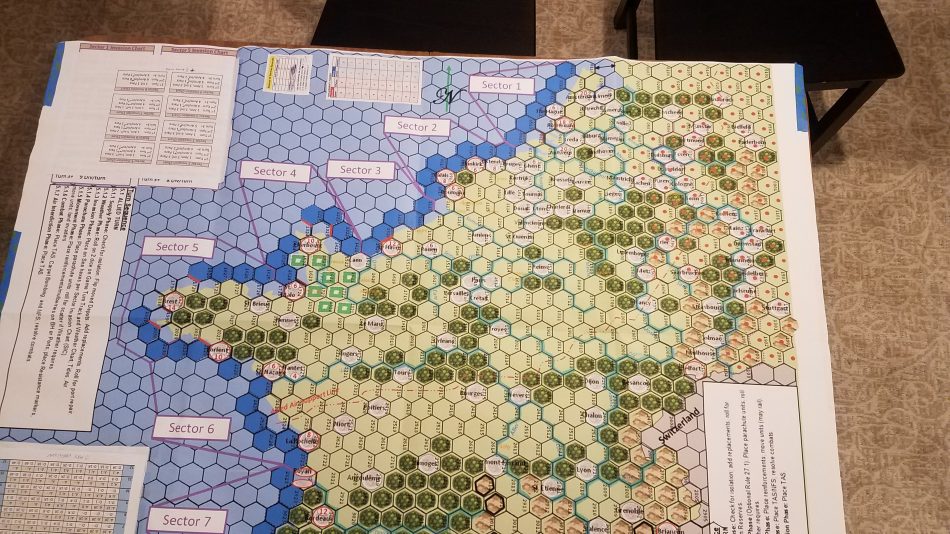
Some game elements irked us, such as the absence of Allied naval gunfire support, despite numerous instances of its use and efficacy. Air support didn’t feel right, either in its range or its effects. Several significant elements of the campaign were absent as well: the famous French Resistance, German V-weapon sites, and use of the French rail system.
The game’s terrain was too minimal, consisting only of clear and mountain hexes and river hexsides—and no accounting for the impact of the infamous Normandy bocage, or of the many forests in France and the Low Countries, nor the many cities, all impacting maneuver and combat planning. D-Day also aggregated numerous sub-division-sized units into division units, lowering the number of units in the game.
A large number of coastal hexes contained low value “supply capacities” representing village quays along the shore as well as high supply capacity major harbors such as Rotterdam and Antwerp, from which the Allies could draw supply. However, that’s not how the Allies supplied themselves.
They sought large harbors, which they augmented or repaired as they were able, and initially used mulberries (artificial harbors) to provide logistics support to the troops. Finally, HQ units in D-Day had no actual command and control function in the game and merely served as very weak combat units. There were more issues, but these were among the most important keeping the game from realizing its potential.
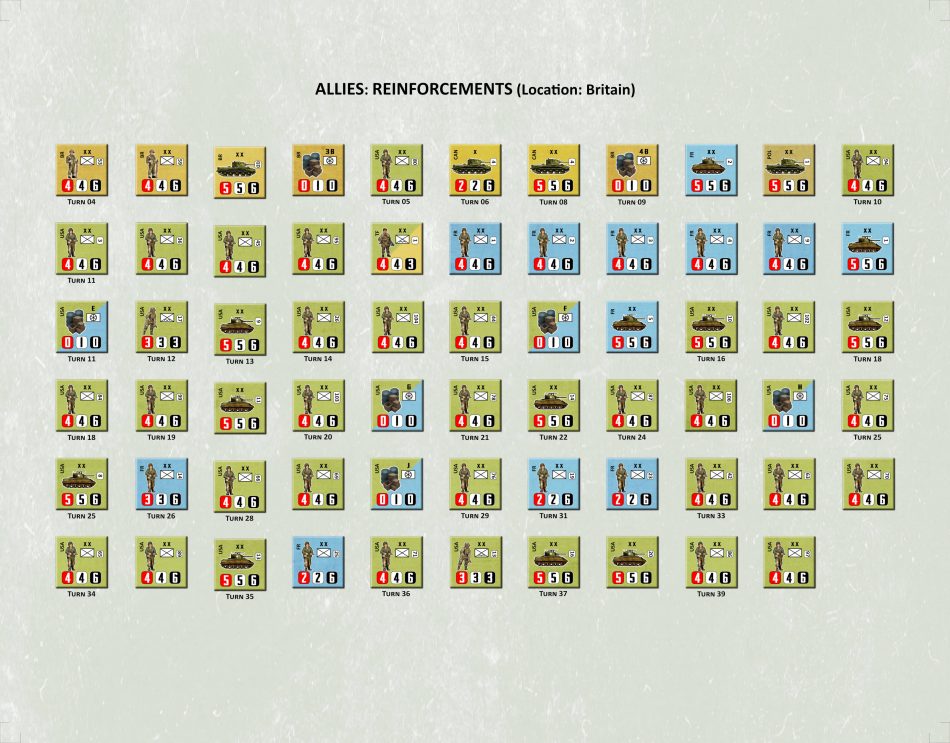
With this list of “gripes” in hand, Jim and I began researching. While well-grounded in this period, we both acknowledged that what we “knew” might not be the whole story, and if we wanted to build the game with appropriate historicity, we wanted to be sure of our knowledge.
Since we initially didn’t intend to publish our game, but just play it ourselves, we set no timeline for the research or replays. I worked on the map, while Jim researched logistics-rail, ports, port repair, Red Ball Express, and so on.
I wrote out an alternate CRT incorporating a 3:2 column, a 2 die roll, attacker and defender impacts for each result, and a tactical air support row. I began drafting a new set of rules. After months of slow progress, while we played other games, we finished our playtest version of the game.
Jim used dry erase markers to update the Avalon Hill map, and I marked all the units in the game on their blank backs with half strengths for unit breakdowns. I printed new game charts and we began rolling dice, playing three more games while we refined the rules and game components. We arrived at a final version we were happy to call our own in December 2019 and set it aside as complete.
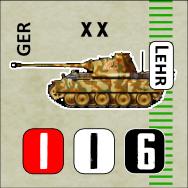
In February 2020, while thumbing my way through the dealer tables at Prezcon in Charlottesville, VA, I renewed my friendship with Mark H. Walker, designer of the Lock n’ Load and World at War series games. We chatted about recent projects, and he expressed high interest in my work on DDAB. He knew I’d been the lead designer/developer for Avalanche Press for a while on their Panzer Grenadier line, and asked if I’d like to publish the game through Tiny Battle Publishing. After consulting with Jim, we agreed to polish up our design.

From a homebrew to a commercial wargame, we decided to do more research, take a trip to Kinko’s to print a new map, charts, and counters (mounted onto scrap cardboard, back and front). More playtesting and rule refinements followed. By mid-May 2020 we felt we had a product worthy of submission. Mark turned the electronic file components over to an artist who turned my functional playtest map into a piece of art, and then eventually to a 3rd party playtester. And here we are.
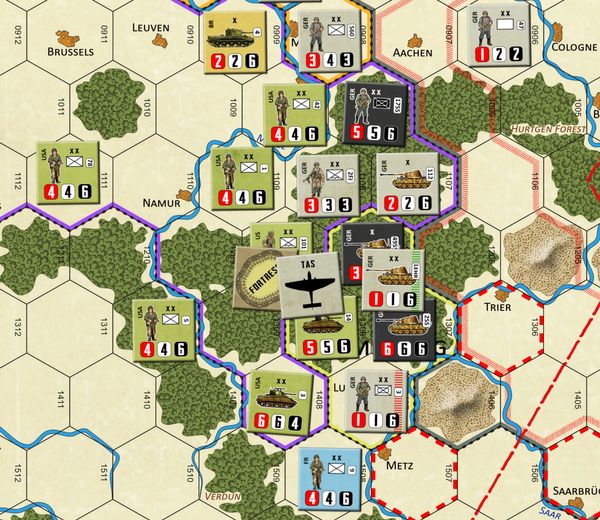
So what did we add? What makes DDAB better than other games on the market?

First, we upgraded the order of battle for both sides, eliminating the useless HQs, then adding all the historical ground units that participated in the conflict. Next, we gave each unit a step-down strength for more graceful and realistic degradation of combat power; gone is the unrealistic elimination of whole divisions in a single fight.
To reflect the longer staying power of German units over time, their larger, more capable divisions have a third or fourth breakdown step. We also segregated the German Battle of the Bulge forces, which allowed us to offer some scenario options for the players, who can save those resources for the Bulge, or expend them earlier in the campaign, forgoing a later punch. Both players have the option to pull units out of the line to build them back up, and the Allies can even move units back to Britain to refit, freeing a supply slot for a fresh, full-strength replacement unit, if available.
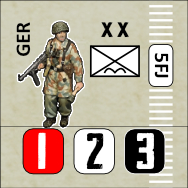 We added a significant amount of terrain to the game map, including plenty of woods, the nasty Normandy bocage, a few more rivers, and all cities of 40,000 persons or more from that period. We designated the Ruhr area, Germany’s industrial core, and added rules encouraging German defense and Allied capture.
We added a significant amount of terrain to the game map, including plenty of woods, the nasty Normandy bocage, a few more rivers, and all cities of 40,000 persons or more from that period. We designated the Ruhr area, Germany’s industrial core, and added rules encouraging German defense and Allied capture.
The denser and more varied terrain offers the German player more defensive options than merely defending river lines, and channels allied advances, as happened historically. Close study of the mountain areas showed us that a significant road network existed, so more were made passable, if still easy to interdict.
We also reduced the number of supply ports marked on the map to those that provided a level suitable to sustain Allied operations and tied them to a unique depot system that forces the Allied player to build a logistic tail to support his operational advance. At the scale of about 20 miles per hex, stacking was increased to allow players to achieve the unit densities experienced during the campaign. We added a few extra fortress markers in case the German player wants the option of fortifying more coastline.
Invasion sectors possess unique limitations as to the numbers of troops of each type that can be landed by sea or parachuted in, based on a variety of logistical and geographical concerns. Invasions on the west coast are perilous if the German submarine pens are not neutralized first.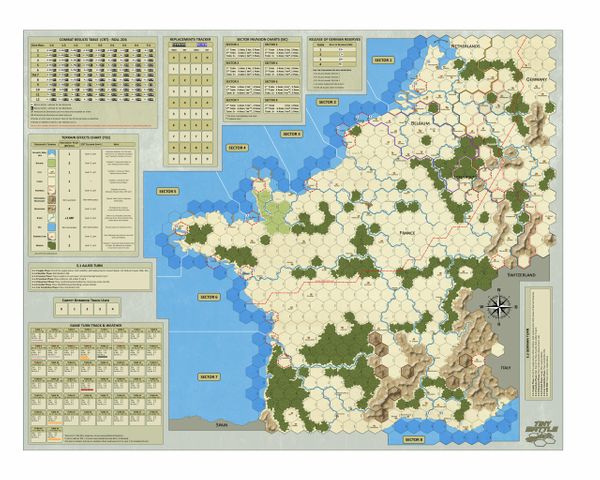 Combat was revamped with a new CRT using two dice rather than one—giving us a wider range of results, but with a probability curve reflecting expected outcomes at various odds levels. Odds of 3:2 were added, smoothing the combat probability curve, and giving players opportunities to fight effectively without raising odds from 1:1 to 2:1.
Combat was revamped with a new CRT using two dice rather than one—giving us a wider range of results, but with a probability curve reflecting expected outcomes at various odds levels. Odds of 3:2 were added, smoothing the combat probability curve, and giving players opportunities to fight effectively without raising odds from 1:1 to 2:1.
Terrain modifiers were kept, but airpower effects were reduced to reflect research showing it actually played a fairly minor role in determining the winner of a battle. Not to nerf my former Service (I flew transports for the USAF), but we added rules reflecting five missions tactical air performed: attacking or defending ground units, along with three forms of interdiction to help isolate the battlefield and shape enemy movement, deny access, or attrit enemy units.
This is particularly true when combined with airborne drops in key locations. However, the unsinkable aircraft carrier of Britain imposed range limits, so the operational effectiveness of airpower is reduced at longer ranges. Naval gunfire and carpet bombing round out Allied firepower options, while the Luftwaffe, against long odds, has been given one or two aces up its sleeve trying to keep the Allies at bay.
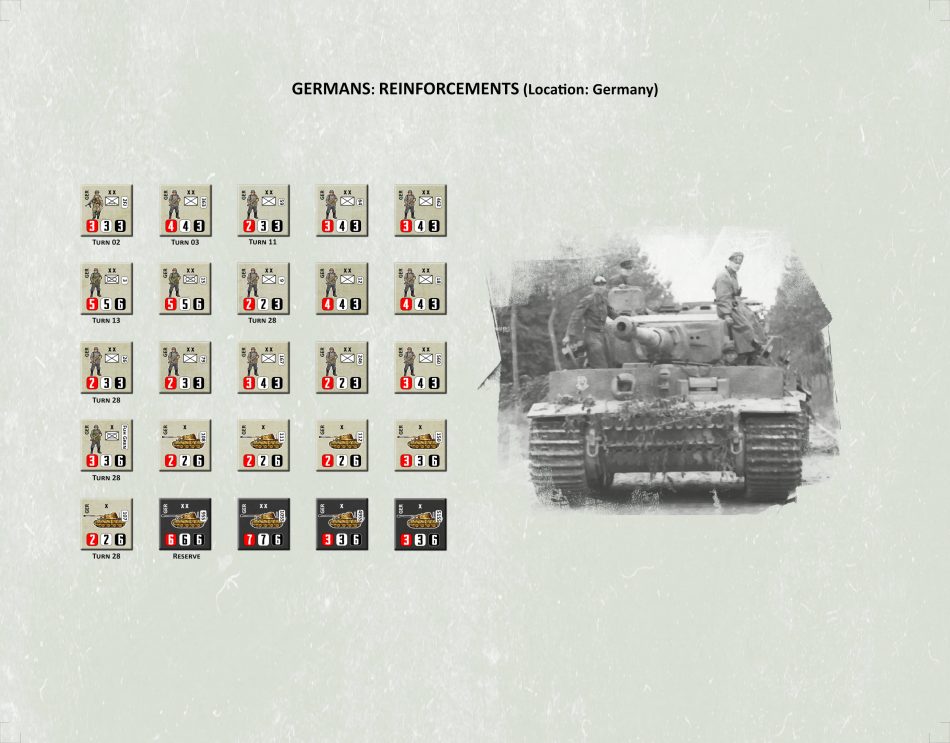
Allied depot units reflect the Army- and Corps-level assets that kept the fuel, ammunition, food, and replacements headed to the front line Allied units. Each of the limited numbers of depots only supports a handful of units, so the player must place them carefully (and guard them), because every time one is moved it has reduced ability for that turn, likely putting some units out of supply, reducing movement, and lowering combat capabilities.
Many of you know how Eisenhower transferred logistic support between armies to encourage or constrain some of his commanders, and we wanted that tension here as well, so depots are either American (plus French) or British (and dominions/allies). The Germans, at the operational level, did not suffer these logistic headaches.
Their challenge was manpower and getting new or rebuilt units to the front. Therefore, we added the German rail movement on the French rail system. Due to a dearth of flatcars and other support equipment, German armor can’t move by rail (unless you use an optional rule), but it can force march, and hope the Allied airpower doesn’t hit it.
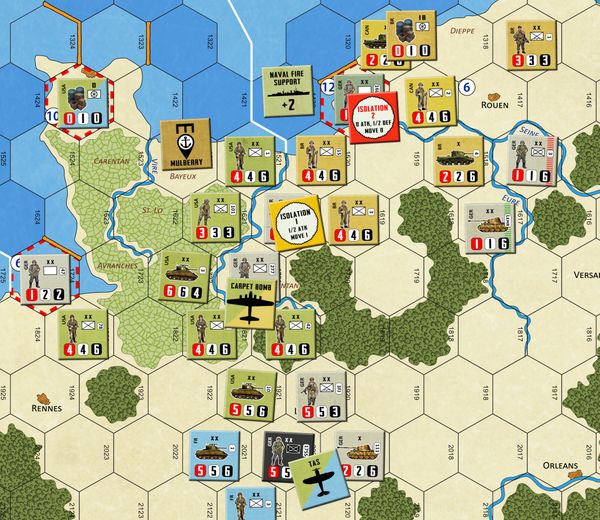
The release of German armored reserves requires a die roll that varies with the location of the initial invasion. This reflects Hitler’s absolute control of those resources, and his early inability to accept the Allied invasion as a threat. He was fighting a two front war, and anything not absolutely needed on one front could be (and was) sent to the other front. If he didn’t need to send the panzers to the coast to fight the invasion, then he could send them to oppose the hard-charging Russians.
Capturing V-weapon sites is incentivized in the Victory Point schedule to reflect the British desire to reduce the incessant bombing of their cities. This site seizure is at odds with the pinning and defeat of German forces in some cases, and creates a bit of a planning dilemma for the Allied player.
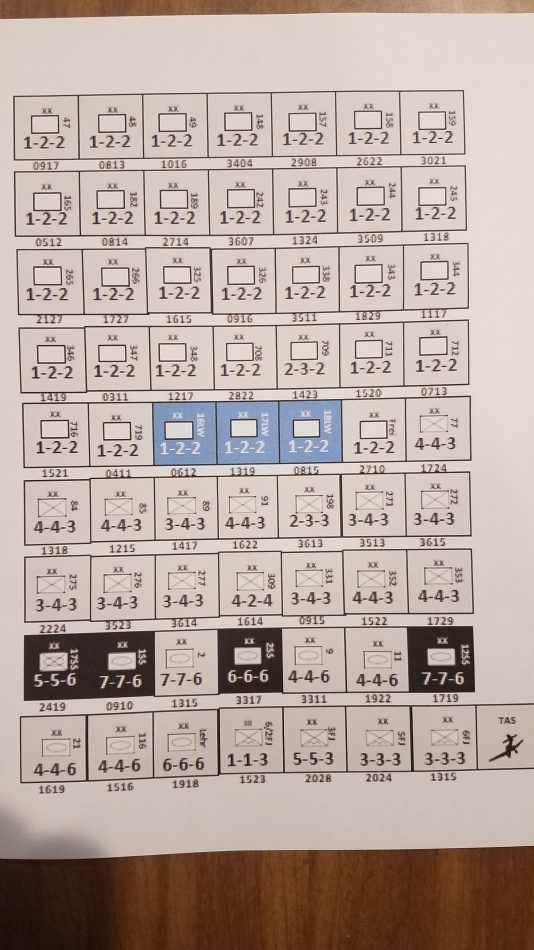
The French Resistance has a role to play interdicting German movements; more so after the liberation of Paris. There are some optional rules that can be used in pairs to provide ahistorical options like fully operational fallschirmjäger units (allowed to para drop), Patton leading the invasion, more extensive German coastal defenses, more flexibility for Rommel to deploy armor, greater German rail options, German fuel shortages, and increased or decreased depots to alter the Allied logistics footprint.
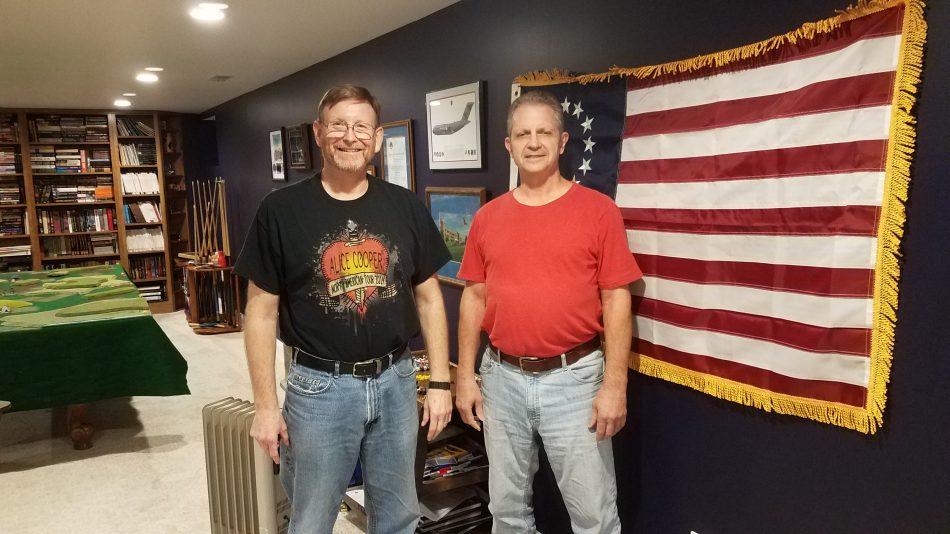
The victory point schedule incentivizes players to strive for results beyond the Allies crossing the Rhine or the Germans throwing the invasion back into the sea. Players get victory points for controlling key locations like Paris, the Ruhr, German strategic installations, depots, ports, and mulberries.
Scenarios include the Historical Setup, Historical Setup with Hidden Units, Free German Setup, and The Short Game (13 turns vice 50). Altogether, I think you’ll find the game easy to learn and play the first time around. You have enough options to make decisions challenging without being overwhelmed. And if you don’t win the first time out, reset and try another strategy. Good gaming my friends.
Pick up your copy .
